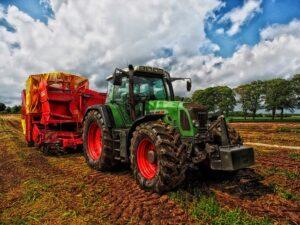The purchase of agricultural machinery fell: data from the first quarter
According to the latest report of the Agricultural Economics Institute (AKI), in the first quarter of 2024, individual farms and social enterprises bought a total of HUF 39.5 billion worth of new agricultural machinery and equipment. However, this amount shows a significant decrease of 56 percent compared to the turnover achieved in the same period of the previous year. In contrast, HUF 19.8 billion were spent on parts in the same period, which was 2 percent higher than sales in the first quarter of 2023.

(Photo: Pixabay)
The structure of the agricultural machinery market continues to show the dominance of power machinery, which accounted for 54 percent of all sales, while construction machinery and other machinery accounted for the remaining 46 percent. It should be highlighted that tractors represented 35 percent of total sales, and grain harvesters 6 percent.
Farmers’ caution and market difficulties
In recent years, the willingness to purchase agricultural machinery has grown steadily, mainly due to favorable tender conditions and financing opportunities. However, starting from the second quarter of 2023, caution among farmers began to be experienced. This is due to the economic recession, difficulties in the grain market, rising machine prices and deteriorating financing options.
A significant decline in the market for tractors and combine harvesters
As a result of these factors, machine sales in 2023 decreased by 25 percent, which was only partially offset by a 6 percent increase in the purchase of spare parts. The market for tractors and grain harvesters suffered the biggest decline. And in the first quarter of 2024, the decline continued, with agricultural machinery sales falling by 56 percent compared to a year earlier.
Future prospects and farmers’ willingness to invest
For the future growth of the agricultural machinery market, new application opportunities and the efficiency of farming are essential. The year 2024 will be a year of waiting, where, in addition to bank loan promotions and leasing alternatives, new tenders may give hope for the return of farmers’ willingness to invest. In the examined period, 67 percent of agricultural machinery and equipment sales were handled by ten distributors, of which three wholesalers held 46 percent of the market. However, the share of the first ten companies and the three largest enterprises decreased by 13 and 14 percentage points, respectively, compared to the first quarter of 2023. Despite all this, according to the experts, Hungarian farmers’ openness to technological developments is clearly reflected in the purchase of agricultural machinery and tools. In the future, this openness may also be key to increasing the competitiveness of Hungarian agriculture.
novenyvedoszer.hu
Related news
AM: Government helps farmers with a loan moratorium
🎧 Hallgasd a cikket: Lejátszás Szünet Folytatás Leállítás Nyelv: Auto…
Read more >More than 100 Hungarian farmers also demonstrated in Brussels
🎧 Hallgasd a cikket: Lejátszás Szünet Folytatás Leállítás Nyelv: Auto…
Read more >NAK: Domestic producers await customers with an ample supply of all pine species
🎧 Hallgasd a cikket: Lejátszás Szünet Folytatás Leállítás Nyelv: Auto…
Read more >Related news
Christmas shock in commerce: for the first time, we can pay with bank cards in fewer places
🎧 Hallgasd a cikket: Lejátszás Szünet Folytatás Leállítás Nyelv: Auto…
Read more >Hungarian Confectionery Manufacturers Association: trends in 2025 and prospects for 2026
🎧 Hallgasd a cikket: Lejátszás Szünet Folytatás Leállítás Nyelv: Auto…
Read more >Most grocery chains will be open until noon on December 24th
🎧 Hallgasd a cikket: Lejátszás Szünet Folytatás Leállítás Nyelv: Auto…
Read more >






